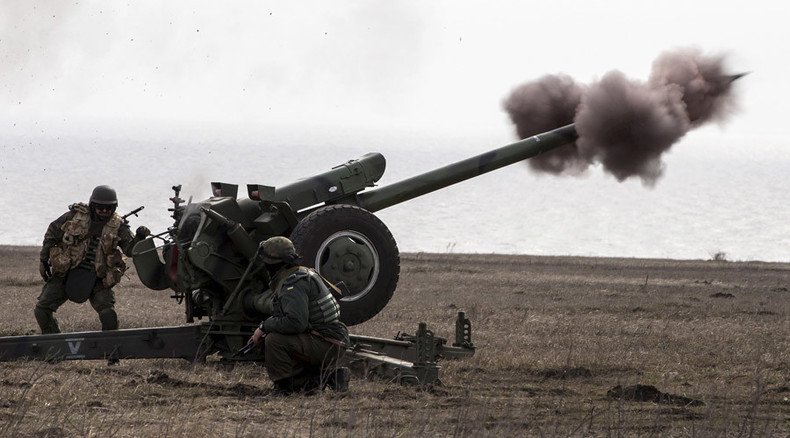Rebels, Kiev forces using heavy weapons at contact line – OSCE mission head in E. Ukraine

Both Ukraine Armed Forces and rebels have been registered accumulating military hardware and using heavy weapons near the contact line which runs counter the agreement reached in Minsk, Alexander Hug, Deputy Chief Monitor of the OSCE Special Monitoring Mission to Ukraine, told RT.
Probes of shell holes in Lugansk region revealed that both conflicting parties have continued firing 122mm and 152 mm artilleries as well as Grad rockets, Alexander Hug said at a briefing on Wednesday.
Ceasefire violations will be among the most urgent matters addressed at the upcoming trilateral contact group meeting on August 26. To go deeper into that, RT talked to Alexander Hug via a Skype connection.
RT:You have said that you did have problems passing through Ukrainian army checkpoints in Eastern Ukraine. Can you explain to us what problems you had?
Alexander Hug: It has to be made very clear that most of the problems at the moment in terms of access we have on the so-called “deeply our” side. Even this morning we have been threatened by a DPR checkpoint in Bezymennoye down at the Azov sea. DPR members have been threatening our patrol to kill them if we show up again at the checkpoint.
RT:And what happened after that? Did you then have to retreat? What had it to playact?
AH: We had to retreat. The threat was very aggressive and the team had to return back westwards towards Mariupol.
RT:Is that an isolated case? Is this generally what you are facing on a day-to-day or weekly basis or are these isolated incidents.
AH: No, in recent days we have unfortunately seen increase of incidents on the rebel side. They also had a rather serious incident a few days ago when a DPR member at the checkpoint threw a 122 mm artillery shell into the car of our observers and that is a very serious security breach. We follow up these and incidents. We have seen ineffective control in the area.
RT:We can understand that is a very difficult situation at the moment. Turning to the point to the village of Gorlovka. We understand that it’s been under increased shelling in recent weeks. You've been there. What did the locals tell you about what has happened?
AH: Indeed, I’m just back from a patrol to Gorlovka. We have been talking to the city officials, and also to utility workers. I’ve also been with my team in areas that have been recently shelled. These people are indeed facing sustained shelling for a very long period. These people want only one thing.
They only want to go back to normal life. I have also spoken to a small boy this afternoon, his name is Kirill. “When can I go back to school on the normal circumstances,” he asked. At the moment Gorlovka is rather quiet and we do all we can to make sure this is lasting longer and to bring the fighting in and around Gorlovka to an end.
RT:Just recently the Russian Foreign Minister said the he felt that Kiev is preparing for a new offensive in the East. What’s your view on that?
AH: As you know, we have been registering that both sides are using heavy weapons at the contact line, including multi-launch rocket systems. Both sides, the rebel forces and the Ukraine Armed Forces, use these weapons in violation of the Minsk arrangements. We’ve also seen an accumulation of military hardware all along in the contact line on both sides.
RT:Western forces are currently going through training drills in the west of the country. Do you think that this is having detrimental effect on the Minsk peace deal or that is actually innocuous?
AH: At the moment none of the interlocutors I’ve met here, or in Donetsk , or on my way here has mentioned these drills. Nobody has negatively or positively commented on these.
RT:The OSCE has been noting you said there is increased shelling in the Eastern Ukraine. Do you think this means the Minsk-II peace deal is in jeopardy?
AH: Indeed these fights do not adhere to the first principle of Minsk arrangements which is the ceasefire probation. All weapons should be silent and in addition to that no heavy weapons should be close to contact lines. Both these two first provisions of the 13-point-measure package of February 12 are not being fully observed. We continue to register these violations and it’s up to the sides now to put actions behind the word onto which they put their signature on February 12.












